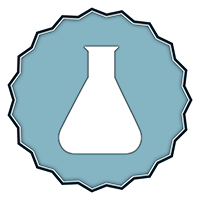I received so much positive feed back and questions from my last article “Our Addictive Society” that I was encouraged by readers to write a follow up. In this second installment my focus is on what I call the “Neo-Opium Wars” that is taking place right now, here on our streets in America!
Our Addictive Society Part II:
The Neo Opium Wars
I received so much positive feed back and questions from my last article “Our Addictive Society” that I was encouraged by readers to write a follow up. In this second installment my focus is on what I call the “Neo-Opium Wars” that is taking place right now, here on our streets in America!
This is an issue that is very close to my heart. I’ve been involved in addiction treatment for nearly thirty years. In that time nice people with addictions have died in my arms. I nearly lost my only son to this disease – the most painful experience of my life. I look around today and all I can see is that drugs – mostly opiate based – are more accessible than ever. When I first became an addiction counselor it was rare to see someone with an addiction to a prescription drug. Today my center is flooded with them. We’ve seen more than double the number of heroin addicts in the last year.
A while ago I read a statistic so shocking that I literally became sick to my stomach. It led me to the realization that we are now living in the “Neo-Opium Wars” era taking place right here on our soil. Of all the prescription opiate painkillers manufactured and sold in the world, Americans consume eight out of every ten. Do we suffer that much more pain compared to the rest of the world? Keep in mind this statistic doesn’t include illicit narcotics such as heroin. So how did we get here?
Opium – the base from which painkillers and narcotics are derived – has been a big part of global trade since its discovery. It was a highly sought after product during the ‘New Stone Age.’The Sumerians – who cultivated opium in lower Mesopotamia (Iraq) – called it the ‘joy plant,’ which many experts believe is a reference to its recreational use, circa 3400BC. They shared their methods with the Egyptians who cultivated their own. Their finished product found its way throughout the Mediterranean. Eventually opium became available in all of the populated regions.
However, it was the Chinese who had the most tumultuous history opium on recorded. Although the Chinese used opium for medical purposes for thousands of years, it wasn’t until the fifteenth century that it was widely used as a recreational drug. Addiction was ramped. It was said that people sold all of their personal belongs to purchase more opium. In 1729 Opium became a banned substance in China. But, as you would suspect with any addictive substance, there was still a high demand for opium and a few British opium traders exploited it.
The British had developed a taste for tea but the Chinese had little interest in trading for British manufactured goods. They demanded silver – which was in short supply – for payment. The Brits were buying three times as much as they were selling to the Chinese, making tea very expensive and creating a huge trade deficit.
British opium traders began tipping the scales in their favor while lining their pockets at the same time by illegally selling opium – produced in India under British East India Company monopoly – on the Chinese black market. They used small boats to smuggle opium chests into rivers and deltas along China’s coastline. The ruling Chinese emperor at the time initially looked the other way because it created an indirect tax on Chinese subjects, thus adding to the government’s treasury. It wasn’t until 1839 – after the devastating social impact of opium – that Emperor Daoguang declared a war on drugs. His military raided known British opium stores in China and destroyed 20,000 opium chests. It was China’s “Tea Party” that triggered the first opium war.
The Chinese Empire was soon decimated. It lost both the first and second opium wars, forcing the country to accept opium imports from foreign countries. The social impact was devastating. By the late 1800’s it was estimated that over 27% of the Chinese adult male population was addicted to opium. But they were not alone; opium addiction was one the rise across the globe. However, the economic impact under the post opium war guidelines was a watershed for business.
Opium traders began cultivating opium in China. By the early 1900s, China became the world’s foremost opium producer with more than 22,000 tons a year. It took another fifty years for China to rein in the runaway opium addiction.
Opium was a huge business during this era. The decisions made by government officials that skewed towards commerce regardless of the social impact fueled China’s rapidly growing addiction to opium. It destroyed millions of lives. But at the same time, the revenue and taxes generated from opium sales helped grow treasuries and lift economies during a competitive economic time. So it is with this in mind that I look to our current conflict, the “Neo-Opium Wars,” which is taking place on two fronts right here in America, legal and illicit.
As I mentioned before opium plays a large role in the global economy.
It takes a business to move a product from a raw material to a finished product, through distribution channels to retailers and finally to the end user. It takes a big business to move a product such as opioid prescription painkillers through the cycle and into the hands of the end users.
I am by no means anti-pharmaceutical. There are a lot of life-saving drugs available that improve our quality of life. The pharmaceutical companies invested billions of dollars to research these drugs and gain DFA approval.
I believe there is a place for opiate painkillers when there is trauma or severe pain that can’t be treated holistically.
However business is business. At the end of every ninety days these Titians of pills must answer to Wall Street and their stock holders. They have to show a profit and an increase over last year’s sales if they want to keep their job, reputation and status. That is just the unvarnished reality.
Pharmaceutical companies and nearly all other businesses are subjected to principles that can determine their future success and failures. One of those principles is supply and demand. Where ever there is a demand there will be a supply. Pharmaceutical companies who sell opiate painkillers are subject to the same laws of supply and demand as any other business. It stands to reason that the demand for painkillers would be a relatively flat without many spikes. Combine that with competition and you’d expect price to remain low. Yet exactly the opposite is occurring.
USA Today: ”Nationwide, pharmacies received and ultimately dispensed the equivalent of 69 tons of pure oxycodone and 42 tons of pure hydrocodone in 2010, the last year for which statistics are available. That’s enough to give 40 5-mg Percocets and 24 5-mg Vicodins to every person in the United States.” According to the New York Times, Opioid prescriptions are up 33% between 2001 and 2012 while revenue from sales jumped 110% to $8.43 Billion during the same period. This to me simply defies gravity.
The East India Company learned an invaluable lesson when their traders were selling opium to the Chinese – addictive drugs create many repeat customers.
Living in Florida has many benefits. Tropical weather, beautiful sunrises and some of the best food in the world make this state a great place to live. However there is one dark spot in our history that was responsible for the death of thousands of people – pill mills. Pill mills threaded the legal needle between legitimate pain centers and retail storefront for drug dealers. It took a while but the state past legislation nearly two years ago that shut down these modern day opium dens. At their height, Florida pill mills were responsible for over 80% of Oxycontin domestic sales. Florida interstate highways were joking referred to as “The Oxy Express” by out of towners traveling to Florida for the easy access to Oxycontin.
Oxycontin is a narcotic painkiller produced by Purdue Pharma, a privately family owned company started by three brothers. Arthur, Mortimer, and Raymond Sackler were all psychiatrists who worked in Queens’ mental hospital in the 1940s. Arthur left his practice to join a boutique advertising agency in New York specializing in marketing pharmaceuticals. He earned his way into Medical Advertising Hall of Fame by being the first to market drugs to doctors by lavishing them with fancy junkets, expensive dinners, and lucrative speaking fees.
OxyContin was more of a marketing success than a medical breakthrough. The brothers dusted off an old oxycodone formula that was available in generic form for decades and added a time release mechanism they claimed greatly reduced the addictiveness of the drug. The FDA approved OxyContin for sale in late 1995. The brothers followed Arthur’s marketing plan to the letter and sales went through the roof. The company generated $3.1 billion in revenue in 2010.
The first hint that OxyContin was more addictive than claimed occurred in the first couple of years it was on the market. Purdue Pharma changed nothing and continued to tell doctors it was safe. In 2007, a U.S. District Judge ordered Purdue Pharma to pay a $634.5 million fine for misleading the public about the painkiller’s risk of addiction. Purdue Pharma’s revenue was 1.3 billion that year. The fine did nothing for the people who were now addiction to OxyContin or the people who died because of it. Oxycodone was the leading cause of drug overdoses and drug related deaths in Florida for many years – contributing to more than 1,500 deaths in 2010 alone. It sure looks to me like China in the 1700 and 1800s. People are dying horrible deaths while opium traders profit.
I’m not suggesting that all pharmaceutical companies operate this way. However business is business. At the end of the quarter – four times a year – the Wall Street executives and stockholders rarely ask companies how they made their money; just how big are the dividend checks. Pharmaceutical companies are subject to the same scrutiny. I do often wonder what guides the pharmaceutical CEO’s decisions. I also wonder if law makers and regulators look in the same direction as the Chinese emperor for the sake of the economy and treasury – the other way.


